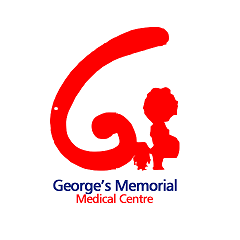
SERVICES
Fertility
1.
Ovulation Induction
Ovulation induction is the process of stimulating the ovary to produce one or more eggs, which can be desirable in a number of clinical situations. There are a variety of medications, which we will discuss, capable of achieving this end.
2.
InVitro Fertilization (IVF)
Many couples who have fertility problems have been able to conceive a child through the use of In Vitro Fertilization (IVF). At George’s Memorial Medical Centre.
3.
ICSI
Intracytoplasmic sperm injection is an in vitro fertilization (IVF) procedure in which a single sperm cell is injected directly into the cytoplasm of an egg. This technique is used in order to prepare the gametes for the obtention of embryos that may be transferred to a maternal uterus. With this method, the acrosome reaction is skipped.
There are several differences between classic IVF and ICSI. However, the steps to be followed before and after insemination are the same. In terms of insemination, ICSI needs only one sperm cell per oocyte, while IVF needs 50,000–100,000. This is because the acrosome reaction has to take place and thousands of sperm cells have to be involved in IVF. Once fertilized, the egg is transformed into a pre-embryo and it has to be transferred to the uterus to continue its development.
4.
Intrauterine insemination (IUI)
Intrauterine insemination (IUI) is a simple procedure that puts sperm directly inside your uterus, which helps healthy sperm get closer to your egg.
IUI stands for in intrauterine insemination. It’s also sometimes called donor insemination, alternative insemination, or artificial insemination. IUI works by putting sperm cells directly into your uterus around the time you’re ovulating, helping the sperm get closer to your egg. This cuts down on the time and distance sperm has to travel, making it easier to fertilize your egg.
Before having the insemination procedure, you may take fertility medicines that stimulate ovulation. Semen is collected from your partner or a donor. It goes through a process called “sperm washing” that collects a concentrated amount of healthy sperm from the semen.
Then your doctor puts the sperm right into your uterus. Pregnancy happens if sperm fertilizes your egg, and the fertilized egg implants in the lining of your uterus.
5.
Egg Donation
Egg donation is the process by which a woman donates eggs to enable another woman to conceive as part of an assisted reproduction treatment or for biomedical research. For assisted reproduction purposes, egg donation typically involves in vitro fertilization technology, with the eggs being fertilized in the laboratory; more rarely, unfertilized eggs may be frozen and stored for later use. Egg donation is a third-party reproduction as part of assisted reproductive technology.
6.
Sperm Freezing
The male testicles are constantly producing new sperm, meaning that even at an older age, a man can still produce viable sperm for fertilizing an egg. However, if a man’s sperm count is low or if he has ejaculatory dysfunction, he may consider freezing his higher-quality sperm samples for later use. Those with occupations that put them at a higher risk for exposure to chemicals, radiation, extreme heat, and other conditions that can cause sterility may also want to freeze their sperm to preserve their fertility.
7.
Embryo Freezing
When an egg is fertilized by sperm, it develops into an embryo. In vitro fertilization (IVF) produces embryos that can be cryopreserved (frozen) for use at a future date during treatment known as frozen embryo transfer (FET).
IVF patients using pre implantation genetic diagnosis (PGD) to test their embryos for diseases and chromosomal abnormalities will need to freeze their embryos to preserve them while the test results are developed. Once the results are in, the healthiest embryo can be thawed and prepared for transfer to the uterus.
With IVF, multiple embryos are usually created, but only one or a limited number are transferred to the uterus in hopes of achieving a pregnancy. The remaining embryos can be frozen to prevent the need for another IVF cycle.
8.
Surrogacy
Surrogacy is an arrangement, often supported by a legal agreement, whereby a woman agrees to delivery/labour on behalf of another couple or person, who will become the child’s parent(s) after birth. People may seek a surrogacy arrangement when a couple do not wish to carry a pregnancy themselves, when pregnancy is medically impossible, when pregnancy risks are dangerous for the intended mother, or when a single man or a male couple wish to have a child.
9.
Fertility Preservation
Fertility preservation is the effort to help cancer patients retain their fertility, or ability to procreate. Research into how cancer, ageing and other health conditions effect reproductive health and preservation options are growing. Specifically sparked in part by the increase in the survival rate of cancer patients.
10.
Sperm Donation
Sperm donation is the provision by a man of his sperm with the intention that it be used in the artificial insemination or other “fertility treatment” of one or more women who are not his sexual partners in order that they may become pregnant by him. Where pregnancies go to full term, the sperm donor will be the biological father of every baby born from his donations.
The man is known as a sperm donor and the sperm he provides is known as “donor sperm” because the intention is that the man will give up all legal rights to any child produced from his sperm, and will not be the legal father.
Sperm donation may also be known as “semen donation”. A man provides his semen but the purpose of the donation is that his gametes contained within the semen, i.e. the sperm cells, be used to provide pregnancies for third parties.
Sperm donation enables a man to father a child for third-party women and is therefore categorized as a form of third-party reproduction.
The process of inseminating a woman with the sperm of a donor to enable her to have a baby is known as donor insemination or DI.
Sperm may be donated by the donor directly to the intended recipient woman or through a sperm bank or fertility clinic. Pregnancies are usually achieved by using donor sperm in assisted reproductive technology (ART) techniques which include artificial insemination (either by intracervical insemination (ICI) or intrauterine insemination (IUI) in a clinic, or intravaginal insemination at home). Less commonly, donor sperm may be used in in vitro fertilization (IVF). See also “natural insemination” below. The primary recipients of donor sperm are single women and lesbian couples, but the process may also be useful to heterosexual couples with male infertility.
11.
Timed Intercourse
Timed intercourse involves using ultrasound to assess the woman’s ovarian cycle to determine when the best time for intercourse will be, in the hope that the chances of achieving pregnancy will be at their highest. Timed intercourse can also involve using medication to stimulate the ovaries to produce more eggs or to induce ovulation. These medications are either taken orally, or injected. Time intercourse is often practiced in conjunction with intrauterine insemination (IUI) to increase the odds of fertilisation.
